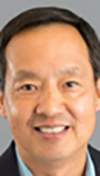|
Subscribe / Renew |
|
|
Contact Us |
|
| ► Subscribe to our Free Weekly Newsletter | |
| home | Welcome, sign in or click here to subscribe. | login |
Construction
| |
 |
July 27, 2023
Elemental geometries steer design of Seattle’s new ferry terminal
NBBJ

Yuan
|
Colman Dock, the flagship terminal of the Washington state ferry system, is designed to be a gateway to the Olympic Peninsula and a portal to the city of Seattle.
KEY BUILDING ELEMENTS
The 20,000-square-foot terminal building, which has three slips to accommodate ferries to Bainbridge Island and Bremerton, features stunning views from the walk-on passenger waiting room and is elevated above the car deck to enhance passenger safety.
The entry building serves as the public face of Colman Dock along Alaskan Way and reinforces the street edge with active retail uses and overhead canopies. A wide stairway on the south end greets passengers arriving from the stadiums; a stair and elevators in the middle accommodate passengers arriving at the passenger drop off; stairs at the north end are used by passengers headed from downtown.
Connecting the terminal building and entry building is the elevated pedestrian connector, a large open space in a curved hourglass shape to allow ease of passenger movement. With seating areas and planned retail pop up spaces, it offers dramatic views of the waterfront to the south and the Olympic Mountains to the north. It also connects to a bridge providing access to a view platform and stairs and elevators down to the passenger-only ferry terminal.
To provide additional public open space and street level activation, two public plazas are designed along Alaskan Way: one at the terminus of Columbia Street directly south of the entry building; and one at Yesler Street.
BUILDING ARCHITECTURE
The architecture considers a simple, elegant and minimalist approach to reflect the project’s function as an important transportation node. Elemental geometries were used for the form of the terminal building and entry building to exert a strong material and physical presence along the water and Alaskan Way that is larger than their physical size.
Key materials like perforated metal panels with a circular “bubble” pattern are carried over from the vertical screen walls of the entry building and repeated at the curved balcony railing panels that line the edges of the elevated pedestrian connector. Mock-ups of the perforated metal balcony panels were built by NBBJ in-house during the design phase to test the constructability of the system and the visual and operational aspects of the design.
SUSTAINABILITY DRIVERS
Arriving at the ferry terminal waiting room, passengers are greeted by a large high ceiling space that offers dramatic views of the Olympic Mountains, Elliott Bay and downtown, including the Seattle Great Wheel. A wood ceiling extends from the underside of the exterior roof to become the ceiling of the waiting room, blurring the connection between the inside and outside. The broad roof overhang also protects and shields the passengers in the waiting room from the late afternoon sun.
Four triangular-shaped skylights bathe the room with natural light, reducing the demand for artificial lighting. Operable openings in the tall windows that extend from floor to ceiling along with large ceiling fans capture and circulate breezes from the water to provide free cooling and fresh air.
Unlike tall office buildings that are primarily perceived at street level, Colman Dock is also prominently seen via a high vantage point from downtown office and residential towers. Therefore, the roof of the terminal building is designed as a “fifth façade,” expressed as a simple metal plane with wide overhanging eaves that hide the mechanical equipment tucked under the roof and provide weather protection for ferry passengers.
WAYFINDING, PASSENGER MOVEMENT
Intuitive wayfinding was also an important goal for the project.
The design allows passengers to walk seamlessly from the new Marion Street pedestrian bridge through the entry building and proceed across the elevated pedestrian bridge directly to the terminal.
Passengers coming to the entry building along Alaskan Way are greeted by bright yellow walls on both sides of the stairways and elevators that lead up to the terminal. Yellow walls also mark the sides of the three main entry doors to the terminal building to further identity the “front door.”
For the visually impaired, tactile maps and an 18-inch-wide tactile paver for cane detection is embedded in the concrete walking surface across the entry building and elevated pedestrian connector leading to the waiting room in the main terminal.
Passengers arriving at the terminal building from Bainbridge and Bremerton ferries are protected by the broad roof overhang and pass through portal gateways also marked with the yellow color.
They walk across the elevator pedestrian connector and make their way to stairways and elevators framed by yellow walls that mark their arrival to the city of Seattle down to Alaskan Way or across the Marion Street pedestrian bridge.
As the first building constructed west of Alaskan Way since the removal of the Alaskan Way Viaduct, the new Colman Dock project serves as an important transportation gateway that we hope will set the tone for future development along the new Seattle waterfront.
David Yuan is a partner/architect with NBBJ and project manager for Colman Dock.
Other Stories:
- New flagship ferry terminal restores salmon habitat, honors tribal history
- Transformed dock is a symbol of progress, sustainability, community
- 6-year rehab faced many challenges
- How computational fluid dynamics ensures optimal heating and cooling at Colman Dock





